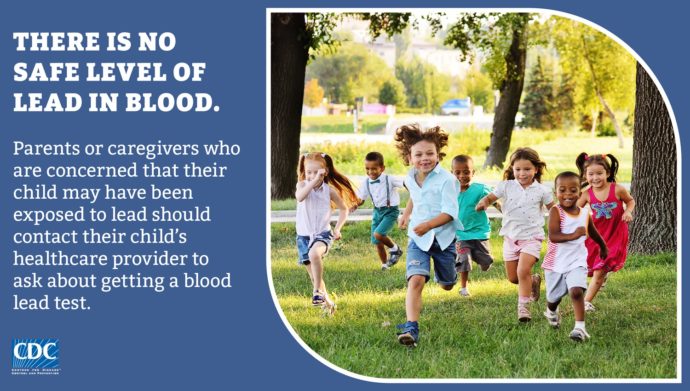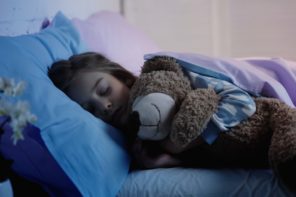For over 30 years, the CDC has been working to prevent lead poisoning through its Childhood Lead Poisoning Prevention Program (CLPPP), which supports 62 state and local health departments with childhood lead poisoning prevention activities. That support includes testing, reporting, surveillance and linkages to care for 47 state health departments and targeted interventions in 12 localities.
They also support tribes, territories and three state governments in building capacity to support childhood lead poisoning prevention initiatives. Eleven community organizations are also recipients of the CDC’s new Supporting Communities to Reduce Lead Poisoning grants.
Parents and caregivers play a vital role in preventing childhood lead poisoning. The CDC is sharing the following information to help you stay informed along with resources where you can seek help if you suspect your child has been exposed to lead.
Sources of Lead Exposure
Children are primarily exposed to lead from lead-based paint, contaminated soil and contaminated drinking water:
- Paint. In 1978, lead-based paints were banned for residential use. However, homes and other buildings such as schools constructed before 1978 likely contain some lead-based paint. When the paint peels and cracks, it makes lead dust. Children can be exposed to lead when they swallow or inhale that lead dust.
- Soil. While playing outside, children can be exposed to lead by swallowing or breathing in soil that is contaminated with lead. They can also be exposed if lead is brought inside on shoes or clothes. Soil is usually contaminated with lead from exterior lead-based paint that peels off houses or buildings and contaminates the surrounding soil. Other sources include industrial waste contamination or leaded gasoline deposited on nearby roads or highways.
- Water. Children may be exposed to lead by drinking water that flows through plumbing materials containing lead or by drinking formula or other foods made with water that contains lead.
Other sources of lead include:
- Products imported from other countries. This could include food, cosmetics, traditional medicines and toys.
- Old collectibles. Collectible items and toys passed down through the generations could contain lead.
- Aviation gas exhaust deposits. This could be airborne or in soil near airports from piston engine aircraft.
- Work or hobbies. Parents and others could bring lead dust into the home if their hobbies or work bring them into contact with lead-based products.
For more information on sources of lead poisoning, visit Sources of Lead Exposure.
Lead Poisoning in Children
Because their bodies are growing so rapidly, children under age six are at greater risk for lead poisoning. Young children also tend to put their hands and other objects, which may be contaminated with lead dust, into their mouths.
No safe level of lead exposure in children has been identified.
Exposure to lead can seriously harm a child’s health and cause serious adverse health effects, including:
- Damage to the brain and nervous system
- Slowed growth and development
- Learning and behavior problems
- Hearing and speech problems
Childhood lead poisoning is preventable. Learn more at Health Effects of Lead Exposure and How to Prevent Lead Poisoning in Children.
Testing and Connecting Children to Needed Services
Parents or caregivers who are concerned that their child may have been exposed to lead should contact their child’s healthcare provider to ask about getting a blood lead test. Most healthcare providers and local health departments can test for blood lead. Many private insurance policies cover the cost of the test. The Childhood Lead Poisoning Prevention Program in your area can provide information about local resources for lead testing.
Based on the results of the test, actions can be taken to further reduce exposure to lead. Your healthcare provider can also recommended treatment and connect you to services.
The Pediatric Environmental Health Specialty Units (PEHSUs) in your region of the country are a source of medical information and advice on environmental conditions that influence reproductive and children’s health, including lead.
For more information, visit Testing Children for Lead Poisoning.
Protecting Children and Communities from Lead Poisoning
Here are steps that you can take to protect children and your wider community from lead exposure:
- Increase awareness about lead exposure among children, parents, caregivers and educators by sharing information about sources of lead exposure and resources for prevention.
- Ask for a blood test if your child is at risk of lead exposure. A blood lead test is the best way to learn if a child has lead poisoning — they may not have visible signs or symptoms.
- Focus on prevention byremoving lead hazards from home. Work with your community leaders to remove lead hazards from schools, playgrounds and other buildings where children gather and play. Learn more at How to Prevent Lead Poisoning in Children.
- Purchase lead-safe products in homes and schools to reduce lead exposure.
- Stay abreast of recalls of products and remove those from your home. Visit the Recalls web page for more information.
Learn more about the CDC’s Childhood Lead Poisoning Prevention Program.
The Centers for Disease Control and Prevention (CDC) works 24/7 to protect America from health, safety, and security threats, both foreign and in the U.S.





